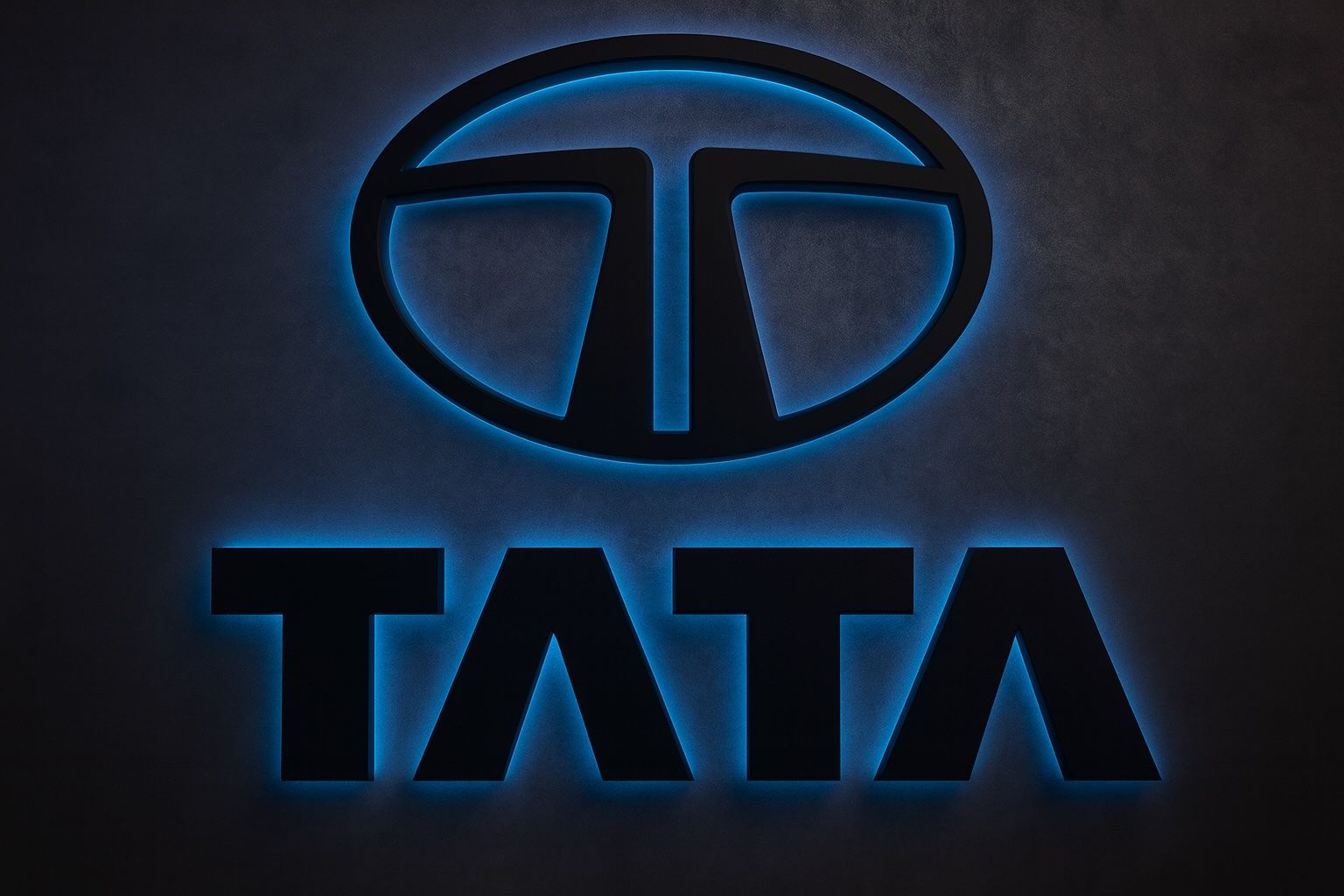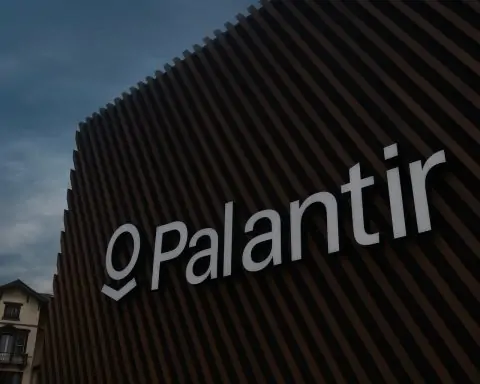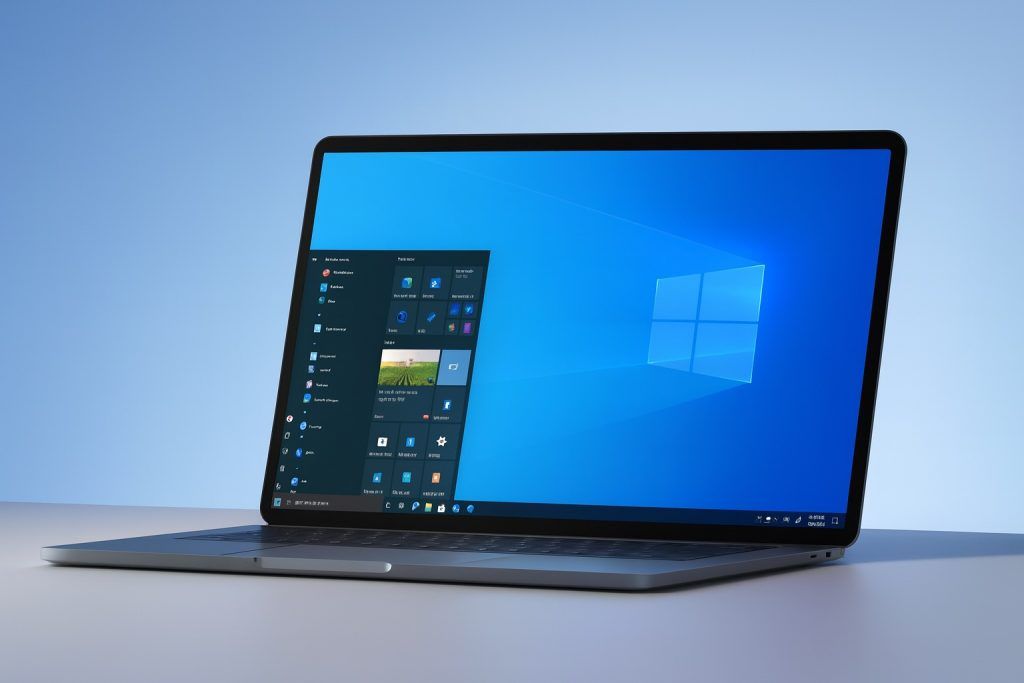- Issue Size & Date: Tata Capital’s IPO (worth ₹15,511.87 crore) opened for subscription on Oct 6–8, 2025 and listed on Oct 13, 2025 [1] [2].
- Listing Price: Shares debuted at ₹330 on both BSE & NSE (about 1.2% above the ₹326 issue price) [3] [4]. They briefly touched ~₹332.80 on open (a 2% gain) before settling near ₹330 [5] [6].
- Demand: The IPO saw “decent demand” – overall ~1.95× subscribed (QIBs 3.42×, NIIs 1.98×, retail 1.10×) [7] [8]. About ₹4,642 cr was raised from 135 anchor investors (including LIC, Morgan Stanley, Goldman, etc.) [9] [10].
- Grey-Market Clues: Pre-listing, grey-market premium (GMP) was muted (~₹7), implying a listing around ₹333 [11]. Experts had flagged that subdued demand and high valuations could cap gains [12] [13].
- Analyst Outlook: Brokers remain cautiously bullish. JM Financial and Emkay initiated coverage with “Add/Buy” ratings, each targeting ~₹360/share (≈10% upside) [14] [15]. They cite Tata’s AAA backing, diversified loan book and strong AUM growth as positives [16] [17]. Swastika Investmart’s Shivani Nyati advised partial profit-taking at current levels but holding the stock for the long term, with a stop-loss near ₹300 [18] [19].
- Fundamentals: Tata Capital (Tata Sons’ NBFC arm) had ~₹2.5 lakh crore in assets by June 2025, with FY25 profit ₹3,655 cr on ₹28,313 cr revenue [20]. Its loan book grew ~37% CAGR (FY23–25) [21], 88% in retail/SME segments. Asset quality is healthy (gross NPAs ~2.1%) [22]. Valuations at the ₹326 band imply ~₹1.38–1.40 lakh cr market cap (~3.4× book, P/E ~32) [23] – in line with large NBFC peers.
- Risks: Analysts warn of limited re-rating due to the moderate return profile. Key risks include the recently acquired Tata Motors Finance portfolio (high NPAs), any credit rating downgrades, and macro or tech/cyber headwinds [24] [25]. Even Moneycontrol notes Tata Capital bought Tata Motors Finance’s high-NPA book, and cyber-security is a concern [26] [27].
IPO Background and Structure
Tata Capital Ltd is the financial-services arm of the Tata Group, offering retail loans, SME financing, housing finance (via subsidiary), insurance distribution, etc. It raised about ₹15,512 cr through a combination of fresh issue (₹6,846 cr via ~21 cr new shares) and offer-for-sale (₹8,666 cr via 26.58 cr shares) [28]. Promoter Tata Sons sold 23 cr shares and the IFC (World Bank arm) 3.58 cr shares in the OFS [29] [30]. The IPO was India’s largest of 2025 [31], and complied with an RBI mandate (Tata Capital, being an “upper-layer” NBFC, must list by Sept 2025). The issue price band was set at ₹310–₹326/share [32].
Anchor investors poured in ₹4,642 cr, signaling confidence [33]. In total, ~135 marquee funds (Morgan Stanley, Goldman, LIC, etc.) participated [34] [35]. Still, many retail investors were cautious (retail subscription ~1.10×) [36]. In the grey market, Tata Capital shares had slid from over ₹1,100 (April 2025) to ~₹735 pre-IPO [37], reflecting tempered expectations. Some analysts (e.g. Kejriwal Research) predicted a discounted listing (around ₹300) due to muted demand [38], though the actual listing was firmer.
Listing Day Performance (Oct 13, 2025)
On Oct 13, 2025 (Monday), Tata Capital’s shares listed at ₹330 on both BSE and NSE [39] [40] – a modest 1.2% premium to the ₹326 IPO price. They briefly jumped to ~₹332.80 (over +2%) at open, as per Investing.com, before easing back. By mid-day, the stock traded around ₹330.10 [41], essentially flat on the day. Later trading saw the price drift slightly lower (around ₹328 on the NSE) [42].
The flat debut “stings” some short-term traders, but analysts note it largely reflects market conditions. Grey-market (unofficial) signals and moderate IPO subscriptions hinted there would be no explosive “listing pop” [43] [44]. Moreover, broader market sentiment was cautious that day – global trade jitters and profit-taking had pushed bank/financial stocks down [45] [46]. Tata Capital’s listing was overshadowed by concurrent events: LG Electronics India’s IPO (₹1.3 billion issue) loomed large for the next day, and negative Tata Group news (e.g. boardroom disputes) dampened sentiment [47].
Tata Group CFO Saurabh Agrawal, at the NSE listing ceremony, acknowledged the subdued debut but emphasized long-term vision: “Today marks the beginning of a new phase… we are conscious of our responsibilities and aware of the expectations” [48]. Likewise, CEO Rajiv Sabharwal told Moneycontrol he’s “pretty happy” with the listing outcome, stressing that the focus is on business growth ahead, not one-day gains [49] [50].
What Experts Are Saying
Analysts uniformly highlight Tata Capital’s strengths: Tata brand backing, AAA credit rating, and diversified secured loan portfolio. Emkay Global (analysis cited by ET) notes Tata Capital is “on path to become a meaningful NBFC lender” due to Tata’s brand and low-cost funding [51] [52]. Emkay’s model projects ~30% EPS CAGR (FY25–28) and ~24% AUM CAGR, led by a vehicle-finance turnaround and large secured-loan mix [53].
JM Financial also initiated coverage with an “ADD” rating and ₹360 target [54] [55]. It points to Tata Capital’s long runway in India’s growing financial-services sector: since 2007 it has lent to 7.3 million customers across 25+ products, and remains capital-rich (raised Tier-1 equity from IPO) [56] [57]. JM forecasts ~20% AUM CAGR and ~34% PAT CAGR for FY25–27, yielding RoA ~1.9% and RoE ~13% [58] [59]. Both brokerages see ~10% upside to ~₹360/share over 12 months, reflecting confidence that fundamentals will drive the stock eventually [60] [61].
Swastika Investmart’s Shivani Nyati suggests a balanced strategy: “booking partial profits near listing levels while holding some shares for the long term” as growth plays out [62] [63]. She adds a caution: “A stop-loss around ₹300 is advisable” to protect against near-term volatility [64]. Her view underscores that while Tata Capital is a solid franchise, valuations are fair and short-term markets can be choppy.
On the other hand, independent analysts like Ambareesh Baliga (quoted by Reuters) note this is “the first time we have seen such muted demand for an IPO from the Tata Group,” underscoring the unusual tempered debut [65]. Others (Dhiraj Relli of HDFC Securities) cite strong competitor IPOs and Tata-specific news as drag factors [66].
Fundamentals & Valuation
Tata Capital’s financials paint a story of fast growth and improving profitability, but with returns lagging the NBFC elite. In FY2025 it earned ₹3,655 cr PAT on ₹28,313 cr revenue [67]. Its loan book (including recent Tata Motors Finance merger) reached ₹2.52 lakh cr by mid-2025 [68], up ~23–37% YoY. About 88% of loans serve retail and SME borrowers [69]. Asset quality is relatively strong (gross NPA ~2.1%, provision coverage ~54%) [70], aided by secured lending (auto, mortgage, etc.). However, margins are modest: NIM ~5%, RoA ~1.8%, RoE ~12–13% [71] – roughly half of Bajaj Finance’s levels, reflecting intense competition and a higher share of lower-yield segments [72].
At the ₹326 IPO cap, Tata Capital was valued at ~₹1.38–1.40 lakh cr (~$15.7 bn) market cap [73]. This works out to ~3.4× FY25 book, or 4.1× trailing BV, and P/E ~32× FY25 earnings [74] – similar to large NBFC peers (Bajaj, Cholamandalam etc.) but higher than recent smaller peers (HDB Financial was valued at ~1.9× book in June 2025). Some brokers note this is at the “upper end of a fair range” [75]. In fact, Tata Capital’s IPO price was a ~56% discount to its earlier unlisted valuations [76], reflecting market conservatism. Going forward, intrinsic drivers (loan growth, credit costs, operating leverage) will determine if the stock merits further multiple expansion.
Key Risks & Outlook
Going ahead, investors should watch macro and company-specific risks. A broader economic slowdown or higher interest rates could slow loan growth and press margins. Analysts caution moderate near-term upside: “the moderate return profile limits the scope of re-rating over the near-to-medium term,” notes ET [77]. Delta in credit costs (especially from the Tata Motors Finance portfolio) also bears monitoring [78]. Moneycontrol flags Tata Capital’s heavy tech reliance – any cybersecurity breach (like recent incidents at Tata Motors/Jaguar) could disrupt business [79].
On the positive side, the festive season and GST rate cuts appear to be boosting demand: Sabharwal expects “very good” Q3/Q4 performance on auto, tractor, two-wheeler loans [80]. The RBI’s NBFC-friendly policies (e.g. lower SLR norms) may also widen Tata Capital’s lending opportunities. In the clean-energy space, the firm already financed 500+ green projects, suggesting future growth areas [81].
Stock Price & Strategy: After debut, Tata Capital trades around the IPO level (₹330 as of Oct 13) [82]. Given analysts’ ₹360 targets, there’s roughly 10% upside consensus (12–18 month view) [83] [84]. Short-term traders may note the stop-loss ₹300 advice [85]. Long-term investors should focus on balance-sheet momentum: if loan growth accelerates, margins stay steady and Tata backing holds firm, the stock could follow book-value growth. As Times of India suggests, any listing-day disappointment might be “bottom-fishing” opportunity for patient buyers [86] [87].
Conclusion
Tata Capital’s market debut may not have dazzled bulls with big gains – but most experts agree the fundamentals justify patience. As one analyst puts it, this IPO is about “scale and steady earnings, not a quick flip” [88]. The company’s strong parentage, diversified portfolio and growth runway are seen as compelling long-term drivers. Investors should stay tuned to Tata Capital’s upcoming quarterly results and macro cues. The key will be whether it can sustain ~20%+ AUM growth and prove its valuations. For now, insiders like the CEO remain upbeat about “Tata Capital 2.0” and India’s growth story [89] [90].
Sources: Multiple financial news reports and expert interviews, including Mint [91] [92], Reuters [93], India Today [94], Moneycontrol [95] [96], ET/Times of India [97] [98], ts2.tech [99] [100], and others (see citations). These cover IPO details, listing data, analyst commentary and company statements as of Oct 10–13, 2025.
References
1. ts2.tech, 2. ca.investing.com, 3. timesofindia.indiatimes.com, 4. ca.investing.com, 5. ca.investing.com, 6. economictimes.indiatimes.com, 7. www.livemint.com, 8. timesofindia.indiatimes.com, 9. ts2.tech, 10. timesofindia.indiatimes.com, 11. www.livemint.com, 12. www.indiatoday.in, 13. www.livemint.com, 14. www.moneycontrol.com, 15. economictimes.indiatimes.com, 16. economictimes.indiatimes.com, 17. timesofindia.indiatimes.com, 18. economictimes.indiatimes.com, 19. economictimes.indiatimes.com, 20. ts2.tech, 21. ts2.tech, 22. ts2.tech, 23. ts2.tech, 24. www.financialexpress.com, 25. economictimes.indiatimes.com, 26. www.financialexpress.com, 27. www.thehansindia.com, 28. ts2.tech, 29. ts2.tech, 30. ts2.tech, 31. ts2.tech, 32. ts2.tech, 33. ts2.tech, 34. ts2.tech, 35. timesofindia.indiatimes.com, 36. www.livemint.com, 37. ts2.tech, 38. www.livemint.com, 39. timesofindia.indiatimes.com, 40. ca.investing.com, 41. ca.investing.com, 42. economictimes.indiatimes.com, 43. www.indiatoday.in, 44. www.livemint.com, 45. www.indiatoday.in, 46. www.reuters.com, 47. www.reuters.com, 48. timesofindia.indiatimes.com, 49. www.moneycontrol.com, 50. www.moneycontrol.com, 51. economictimes.indiatimes.com, 52. timesofindia.indiatimes.com, 53. economictimes.indiatimes.com, 54. www.moneycontrol.com, 55. economictimes.indiatimes.com, 56. www.moneycontrol.com, 57. economictimes.indiatimes.com, 58. www.moneycontrol.com, 59. economictimes.indiatimes.com, 60. www.moneycontrol.com, 61. economictimes.indiatimes.com, 62. economictimes.indiatimes.com, 63. economictimes.indiatimes.com, 64. economictimes.indiatimes.com, 65. www.reuters.com, 66. www.reuters.com, 67. ts2.tech, 68. ts2.tech, 69. ts2.tech, 70. ts2.tech, 71. ts2.tech, 72. ts2.tech, 73. ts2.tech, 74. ts2.tech, 75. ts2.tech, 76. timesofindia.indiatimes.com, 77. economictimes.indiatimes.com, 78. www.financialexpress.com, 79. www.financialexpress.com, 80. www.moneycontrol.com, 81. www.moneycontrol.com, 82. ca.investing.com, 83. www.moneycontrol.com, 84. economictimes.indiatimes.com, 85. economictimes.indiatimes.com, 86. www.livemint.com, 87. economictimes.indiatimes.com, 88. www.indiatoday.in, 89. www.moneycontrol.com, 90. timesofindia.indiatimes.com, 91. www.livemint.com, 92. www.livemint.com, 93. www.reuters.com, 94. www.indiatoday.in, 95. www.moneycontrol.com, 96. www.moneycontrol.com, 97. economictimes.indiatimes.com, 98. timesofindia.indiatimes.com, 99. ts2.tech, 100. ts2.tech







